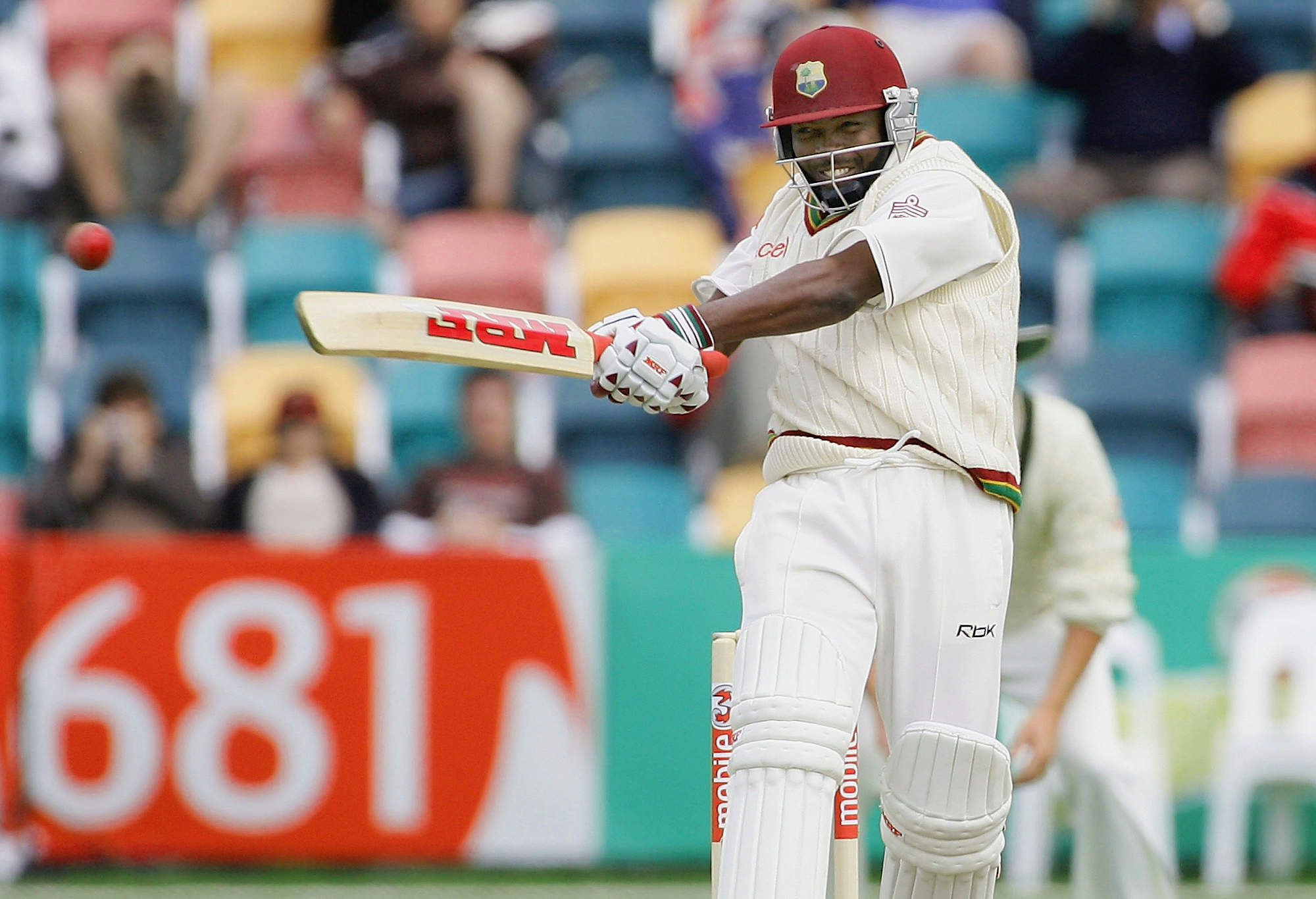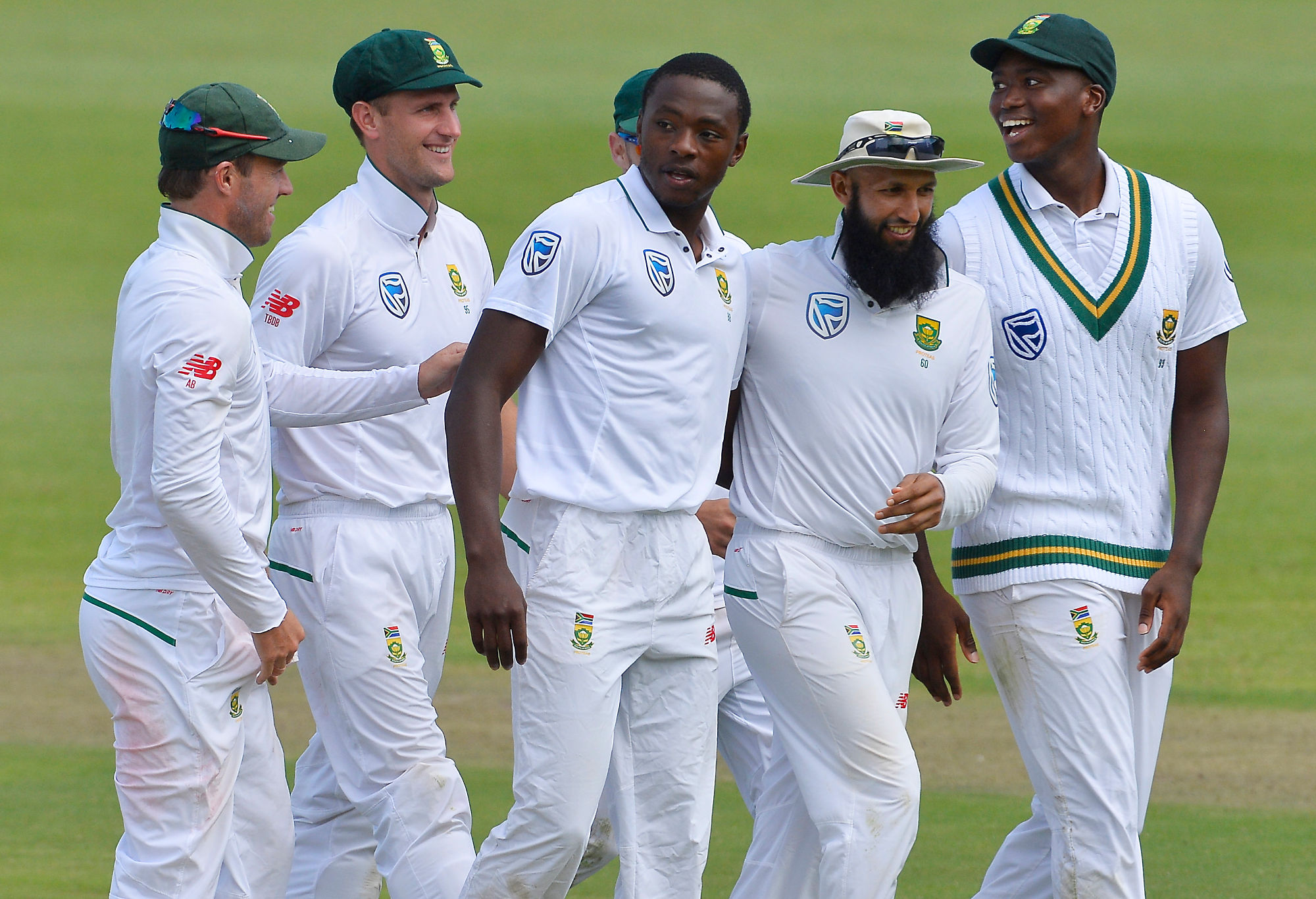This series’ twelfth and final team has a distinct West Indian flavour at the top of the order, and a domineering captain.
It’s also a superb balance of players from different eras, and of varying styles. While two current players will share the new ball, seven of their team-mates played before WWII.
It would be very competitive with April’s strong side Team of the Month: an April-born World Cricket XI.
1. Gordon Greenidge (West Indies, born 1 May 1951)
108 Tests, 1974-1991, 7558 runs at 44.72, 19 centuries
Greenidge is one of the greatest opening batsmen of the modern era. He was both destructive, and technically correct. Cricinfo named him in its all-time West Indies XI in 2010.
It also recently rated two innings by him among the best 100 ever played. At Lord’s in 1984, he scored 214 not out from 242 deliveries to inspire a successful pursuit of a 342-run target, in just 66.1 overs with nine wickets to spare.
In Auckland in 1986/87, his innings of 213 included seven sixes.
On debut in Bengaluru in 1974/75, he scored 93 and 107.
At Old Trafford in 1976, he scored 134 and 101, with the first of those innings representing 63.5 per cent of his team’s total of 211.
His record in England included 592 runs at 65.77 in 1976, and 572 at 81.71 in 1984.
2. Herbie Taylor (South Africa, born 5 May 1889)
42 Tests, 1912-1932, 2936 runs at 40.77, seven centuries
Taylor was his nation’s first great batsman. For two decades he excelled at home on matting pitches, as well as in Australia and England.
Unfortunately WWI interrupted his career, when he was at his peak.
Taylor’s greatest series was at home to England in 1913/14, when he amassed 508 runs at 50.80.
He was the only batsman to defy the legendary SF Barnes, who claimed 49 wickets at 10.93. And when England suffered its only defeat of that tour, against Natal, Taylor’s performance was 91 out of 153, followed by 100 out of 216.
3. George Headley (West Indies, born 30 May 1909)
22 Tests, 1930-1954, 2190 runs at 60.83, 10 centuries
Headley was known as “the black Bradman,” and his supporters referred to Bradman as “the white Headley.”
He is arguably second only to Viv Richards as the West Indies’ greatest-ever batsman.
Cricinfo named him in its all-time West Indies XI in 2010. He was renowned for playing the ball extremely late, and for his back-foot and on-side strokes, and technique on soft pitches.
On debut against England in Barbados in 1929/30 aged 20, he scored 176. His aggregate for that series was 703 runs at 87.80 including four centuries.
Against the same opponent in Jamaica in 1934/35, he scored 270 not out. In Australia in 1930/31, he scored two centuries including a match-winning one at the SCG.
At Lord’s in 1939, he scored 106 and 107. When WWII then interrupted his career at the age of 30, his average was 66.71.
4. Brian Lara (West Indies, born 2 May 1969)
131 Tests, 1990-2006, 11,953 runs at 52.88, 34 centuries
The left-handed Lara is among the greatest batsmen of all time, with his high average complemented by a scoring rate of 60 runs per 100 deliveries.
Cricinfo named him in its all-time West Indies XI in 2010. It also recently rated four performances by him among the best 100 ever played.
They were innings of 375 against England in Antigua in 1993/94, then 213 and 153 not out against Australia in 1998/99 in Jamaica and Barbados respectively, and finally 226 in Adelaide in 2005/06.

West Indian legend Brian Lara in action. (Photo by Hamish Blair/Getty Images)
Against England, he scored a Bradman-esque 798 runs at 99.75 at home in 1993/94, followed by 765 runs at 85.00 away in 1995.
In Sri Lanka in 2001/02 he amassed 42 per cent of his side’s series tally in scoring 688 runs at 114.66, including 221 and 130 in the same match in Colombo.
His innings of 400 not out against England in St John’s in 2003/04 is the highest Test score ever.
5. Warwick Armstrong (Australia, born 22 May 1879, captain)
50 Tests, 1902-1921, 2863 runs at 38.68, six centuries, 87 wickets at 33.59
Armstrong was a middle-order batsman, leg-spinner, domineering personality, and one of Australia’s finest captains.
He led it to eight consecutive Ashes match victories during 1920 and 1921, and is the only captain to have led a team in eight or more matches without suffering a single defeat.
WWI interrupted his career, which spanned 24 seasons at first-class level.
In Johannesburg in 1902/03, he carried his bat with an unbeaten 159.
In the home Ashes series of 1920/21, he scored 464 runs at 77.33 including three centuries, as well as taking nine wickets at 22.67.
Cricinfo ranked his haul of 6/35 at Lord’s in 1909 among the 100 best bowling performances of all time.
He secured the double of 1000 runs and 100 wickets on a tour to England on three occasions.
Tall and slim on debut, he weighed 22 stone by the time of his last game at age 42.
6. Denis Compton (England, born 23 May 1918)
78 Tests, 1937-1957, 5807 runs at 50.06, 17 centuries
Compton was a much-loved risk-taking batsman considered one of England’s finest, and useful left-arm wrist-spinner.
His career was interrupted by WWII, which commenced when he was aged 21, and during which he both served in India and played 12 football matches for England. In 1950 he won an FA Cup final at Wembley with Arsenal.
In Adelaide in 1946/47, he scored 147 and 103 not out. At home to South Africa in 1947, he scored four centuries among 753 runs at 94.12.
In all first-class cricket that summer, he scored 3,816 runs. Against Pakistan at Trent Bridge in 1954, he scored 273 runs in a single day.
His Ashes record included 459 runs at 51.00 in 1946/47, and 562 runs at 62.44 in 1948.
7. Maurice Tate (England, born 30 May 1895)
39 Tests, 1924-1935, 1198 runs at 25.48, one century, 155 wickets at 26.16
Tate was a superb medium-fast bowler known for his apparent pace off the pitch, and a useful hard-hitting lower-order batsman.
His father Fred had entered Ashes history in a three-run loss at Old Trafford in 1902, by dropping a vital catch and then being the last batsman dismissed.
At home to South Africa in 1924 he claimed 27 wickets at 15.70.
In Australia in 1924/25 he took a record 38 wickets at 23.18, including 6/130 and 5/98 at the SCG from the equivalent of 119 six-ball overs.
In that series he also took 3/142 and 6/99 at the MCG, and 4/92 and 5/115 at the SCG’s second match.
With the bat, he scored 100 not out against South Africa at Lord’s in 1929. His career scoring rate of 75.4 runs per 100 deliveries faced has been surpassed by only four other batsmen.
8. Hugh Trumble (Australia, born 12 May 1867, vice-captain)
32 Tests, 1890-1904, 851 runs at 19.79, 141 wickets at 21.78, 45 catches
Trumble was a tall medium-paced off-spin bowler and fine slip fieldsman. He was the first bowler to take two Test hat tricks. He was also a useful batsman who scored four half-centuries and once opened the innings.
In 1896 he took 6/59 and 6/30 at the Oval, in the process bowling 65 of the 66 overs delivered from one end.
In 1902 he took 4/75 and 6/53 in a three-run victory at Old Trafford, and then 8/65 and 4/108 in a one-wicket defeat at the Oval. Cricinfo ranked that second-innings haul at Old Trafford among the 50 best bowling performances of all time.
9. Jack Blackham (Australia, born 11 May 1854)
35 Tests, 1877-1894, 800 runs at 15.68, 37 catches, 24 stumpings
Blackham was Australia’s first wicketkeeper and held the position for 18 years, including for eight tours to England.
He regularly stood up to the stumps to fast bowlers, and is credited with making the position of backstop redundant.
At Lord’s in 1888, he effected four stumpings in a low-scoring victory. He was an inaugural member of Cricket Australia’s Hall of Fame.
He was also a useful lower-order batsman. His four half-centuries against England included an innings of 74 at the SCG in 1894/95, during which he shared a 154-run ninth-wicket partnership with Syd Gregory.
When Australia won a close game by four wickets at the SCG in 1882/83, he contributed innings of 57 from number seven, and 58 not out from number six.

Pat Cummins. (Photo by Ryan Pierse/Getty Images)
10. Patrick Cummins (Australia, born 8 May 1993)
62 Tests, 2011-present, 269 wickets at 22.53
Cummins is a fast bowler who made a match-winning debut aged 18, then due to injury did not play again for another six years.
His ICC bowling ranking peaked in 2019 as the fifth highest of all time. In 2021, he was appointed captain of the Australian team.
His record to date includes 91 wickets from 19 matches against England, and 152 wickets at 19.69 when playing at home.
In 28 games as captain, he has claimed 105 wickets. And in 35 victories, his tally is 166 wickets at 18.27. Last summer, he took 5/48 and 5/49 against Pakistan at the MCG.
11. Kagiso Rabada (South Africa, born 25 May 1995)
62 Tests, 2015-present, 291 wickets at 22.05
Rabada is a superb paceman who debuted at just 20 years of age. His career strike-rate of a wicket every 39.2 balls is the best of any bowler to have taken more than 112 wickets.
At home, his record is 184 wickets at 19.07 from 33 matches. In 29 victories, his tally is an even better 180 wickets at 16.32, including ten wickets in a game on four occasions.
Honourable mentions: Peter Burge, Mike Hussey, Ian Redpath (Aus), Jack Ferris (Aus/Eng), Mushfiqur Rahim (Ban), Colin Blythe, Ted Dexter, Graham Dilley, Tich Freeman, Gilbert Jessop, Hedley Verity, Bob Willis, Frank Woolley (Eng), Bhagwath Chandrasekhar, Erapalli Prasanna, Ravi Shastri (Ind), Glenn Turner (NZ), Sarfaraz Ahmed, Yasir Shah, Misbah-ul-Haq (Pak), Alan Melville, Ashwell Prince (SA), Asantha de Mel, Mahela Jayawardene (SL), Jeff Dujon, Conrad Hunte, Deryck Murray, Sonny Ramadhin (WI).
The ruthless and successful Armstrong is the obvious choice as leader. He is guaranteed to clash with opponents, umpires and administrators alike.
Blackham, Cummins, Greenidge, Headley, Lara, Taylor and Trumble also bring Test captaincy experience to the side.

Kagiso Rabada and his South African teammates. (Photo by Ashley Vlotman/Gallo Images/Getty Images)
The team’s other five batsmen, and especially Lara and Compton, will be attractive to watch.
They earned selection ahead of players of the calibre of Ted Dexter, Conrad Hunte, Mike Hussey, Alan Melville, Glenn Turner and Frank Woolley.
The lower order’s lack of consistent run-scorers is a minor weakness of this strong side. While Jeff Dujon would have added some welcome batting depth, Blackham was preferred for his superior skills standing up to Tate, Trumble and Armstrong.
Cummins and Rabada would form an imposing new-ball attack, and the tireless Tate would support them. No other faster bowlers warranted serious consideration, with the possible exception of Bob Willis.
Former Test and Victorian team-mates Trumble and Armstrong would re-unite as a spin-bowling pair.
They gained selection ahead of Charlie Blythe, Bhagwath Chandrasekhar, Erapalli Prasanna, Sonny Ramadhin, Yasir Shah, Hedley Verity and Frank Woolley. The month of May was certainly a fertile one for champion slow bowlers.
My next article will attempt to predict which of these twelve sides would win a competition between them, or at least be a finalist.
































































































